Pre-Roman Prince’s Tomb Packed With Treasures Found in Italy

Pre-Roman Prince’s Tomb Packed With Treasures Found in Italy
In Italy a Iron Age tomb was found filled with weapons and a chariot.
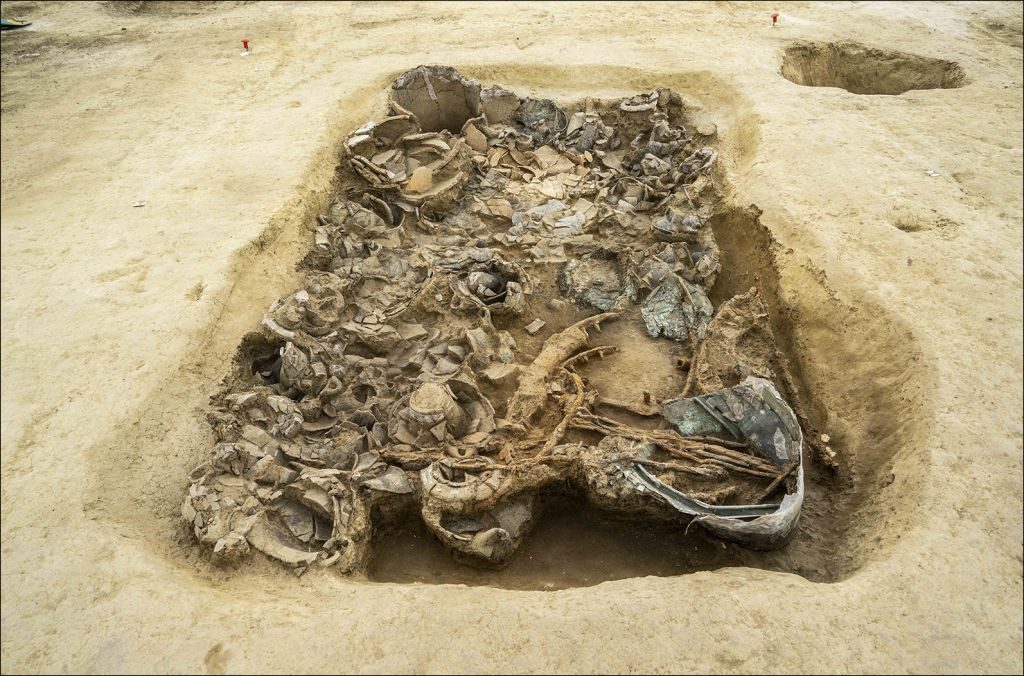
In a newly discovered Iron Age tomb in Central Italy, Archeologists found the remains of an entire iron-wheeled war chariot, a new study found.
There are also other resources in the lavish tomb, including the weapons collection, the bronze helmet and vessels made of bronze and clay.
However, the owner’s body of the chariot’s has long disappeared.
When the person was buried — likely a man on the basis of the grave goods of war — the person probably was buried beneath a large mound of dirt that rose like giants gumdrop the ground.
In the study, study researcher Federica Boschi, a senior assistant professor of archaeological research of methods at the University of Bologna in Italy, wrote that if his body were placed near the surface, “it would have had little chance of surviving the centuries of subsequent ploughing that destroyed all signs of any mound above ground.”
But even though the body is missing, the treasures in this 2,600-year-old grave reveal much about this mystery man, Boschi said. The “extraordinary collection of cultural material” is “unequivocal testimony to the aristocratic status of the tomb’s owner,” Boschi told Live Science in an email.
The burial goods are so swanky, she began referring to the site as the “princely tomb,” Boschi said.
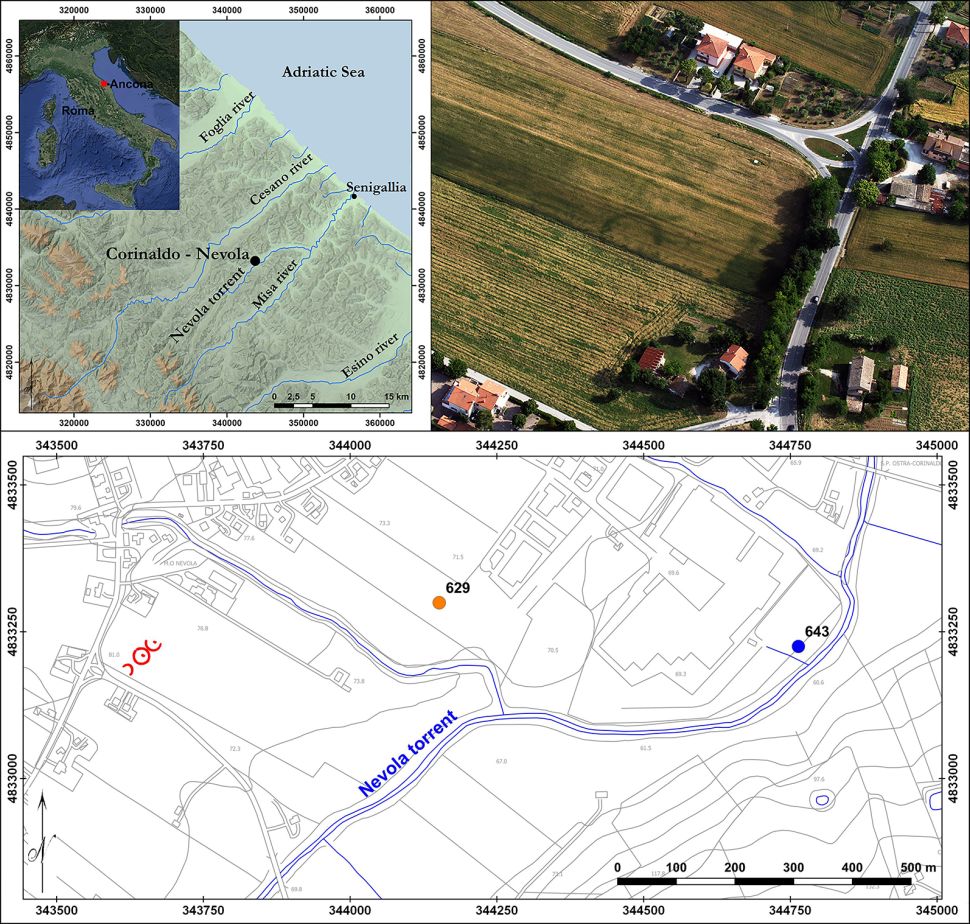
Digging deep
Archaeologists found the burial while surveying the land prior to the construction of a new sports complex in the Nevola River Valley. An aerial survey over the town of Corinaldo revealed evidence of the grave.
This bird’s-eye view showed the remains of large, circular ditches. This seemed peculiar, so Boschi and her colleagues began doing the groundwork. At first, they used electrical resistance, which puts electrical currents into the ground and monitors for anomalies in how current flows through the soil. The team also used magnetic surveys to detect if any metal artefacts were lurking underground.
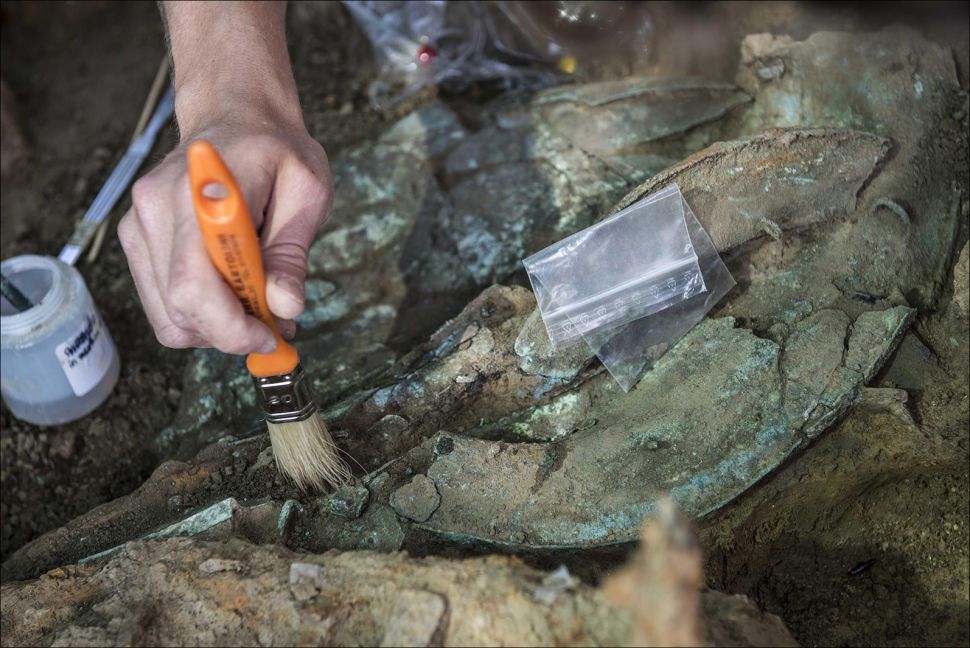
These surveys hinted that something was buried under the ditches. Soon after the archaeologists began digging, they found the tomb and its treasures, Boschi said.
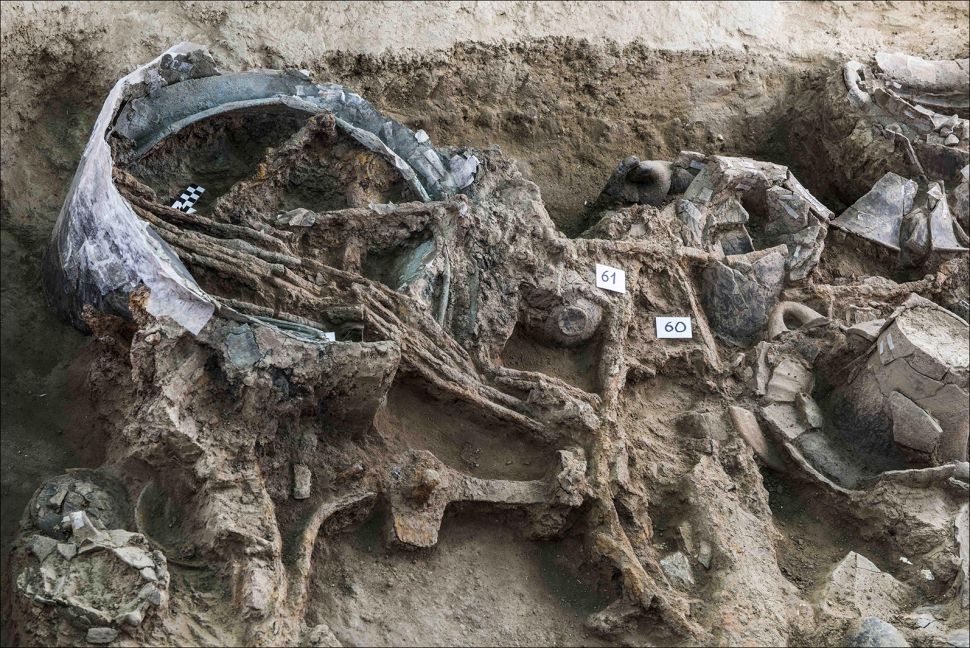
She noted that the grave is surrounded by a 98-foot-wide (30 meters) circular moat, which may have had that gumdrop-like mound over it at the time of the burial. The tomb itself is smaller, measuring 10.5 by 9 feet (3.2 by 2.8 m).
The tomb dates to the seventh century B.C., so it likely belonged to the Piceni culture, a group of Iron Age people who lived along the Adriatic coast of Italy. Evidence, including the artifacts from this burial, indicate that the Piceni were warlike, according to Encyclopedia Britannica. In 268 B.C., Rome annexed their land.
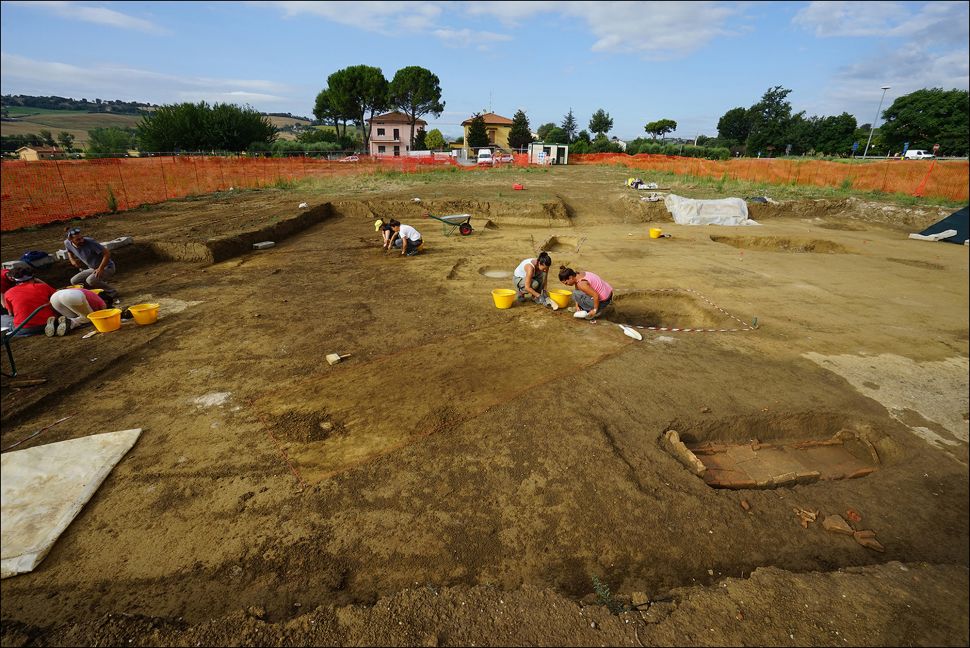
It’s a “rare event” to find such an opulent grave from the Iron Age, Boschi said. Its grave goods, size and the fact that it was once likely covered with an earthen mound “speak to us about a Piceni leader, a person which gathered political, military and economic power,” she said.
Going forward, archaeologists plan to study the hundreds of objects within the burial.